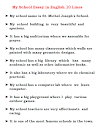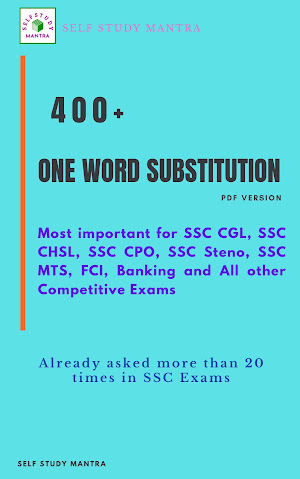Essay on Circular Economy: Innovative circular economy aims to minimize waste, promote reuse and recycle which is need of the hour for sustainable development. The term circular economy has gaining popularity rapidly and so it has become most important essay topic. Here we have written an essay on circular economy for all competitive as well as academic exam. Lets see essay on Circular Economy:
Essay on Circular Economy
The circular economy is an innovative economic model that aims to minimize waste, promote resource efficiency, and create a sustainable future. Unlike the traditional linear economy, which follows a "take-make-dispose" pattern, the circular economy focuses on extending the lifespan of products, reducing waste generation, and regenerating valuable resources. This essay explores the concept of the circular economy, its benefits, and its potential for transforming industries, mitigating environmental challenges, and fostering economic growth.
Understanding the Circular Economy: A Paradigm Shift
This section introduces the concept of the circular economy and its departure from the linear "throwaway" mentality. It highlights the importance of rethinking production and consumption patterns, emphasizing the need to move away from the traditional model of resource extraction and disposal. The circular economy emphasizes the principles of recycling, reuse, remanufacturing, and regeneration, aiming to create a closed-loop system where materials and resources remain in use for as long as possible.
Closing the Loop: Waste Reduction and Resource Efficiency
This heading explores the core principles of the circular economy, focusing on waste reduction and resource efficiency. It emphasizes the importance of designing products for durability, repairability, and recyclability. It highlights the value of waste as a resource and the significance of recycling and recovering materials from discarded products. By closing the loop, we can minimize the extraction of raw materials, reduce energy consumption, and alleviate the burden on landfills and the environment.
From Linear Supply Chains to Circular Value Chains
This section discusses the transformation from linear supply chains to circular value chains. It emphasizes the need for collaboration among stakeholders, including businesses, policymakers, consumers, and waste management systems. It explores the concept of product life extension, where products are repaired, refurbished, or remanufactured, extending their lifespan and reducing waste generation. It also highlights the importance of creating markets for secondary materials and promoting the use of recycled inputs in the production process.
Sustainable Consumption and Consumer Behavior
This heading delves into the role of consumers in driving the transition towards a circular economy. It emphasizes the importance of sustainable consumption habits, including conscious purchasing decisions, product sharing, and the utilization of collaborative platforms. It explores the significance of consumer education and awareness in promoting the adoption of circular practices. By embracing responsible consumption, consumers can support businesses that prioritize circularity and influence industry practices.
Enabling Policy and Regulatory Frameworks
This section highlights the importance of supportive policy and regulatory frameworks in facilitating the transition to a circular economy. It discusses the need for incentives, subsidies, and taxation policies that encourage businesses to adopt circular practices. It also explores the significance of extended producer responsibility, where producers take responsibility for the entire lifecycle of their products, including end-of-life management. Furthermore, it emphasizes the role of international collaboration in creating harmonized regulations and standards for circular economy practices.
Circular Economy in Practice: Success Stories and Case Studies
This heading showcases real-world examples and success stories of organizations and industries implementing circular economy principles. It highlights innovative business models, such as product-as-a-service and sharing platforms, that promote access over ownership. It explores the role of industrial symbiosis, where industries collaborate to share resources, reduce waste, and create new value. Additionally, it discusses the benefits of circular economy practices in sectors such as fashion, electronics, and construction.
Challenges and Opportunities
This section addresses the challenges and opportunities associated with transitioning to a circular economy. It discusses the need for technological innovation, investment in research and development, and the development of infrastructure to support circular practices. It also explores potential barriers, including market barriers, policy gaps, and cultural shifts. By acknowledging these challenges and seizing opportunities, we can overcome barriers and unlock the full potential of the circular economy. Circular Economy Essay PDF download: Click Here.
Conclusion
The circular economy presents a transformative approach to sustainable development, addressing environmental challenges while driving economic growth. By shifting from a linear "take-make-dispose" model to a circular paradigm, we can create a regenerative and resilient economy that maximizes resource efficiency, minimizes waste generation, and fosters innovation. The transition to a circular economy requires collective action from businesses, policymakers, consumers, and communities. Together, we can embrace this paradigm shift and create a future where waste becomes an opportunity for sustainable development.
Also Read:
Hope you liked this essay on circular economy and it helped you in your exam preparation. In addition to this essay on Circular Economy you can read other important essays from here. Essay on Circular Economy, Circular Economy Essay, Circular Economy

























0 Comments